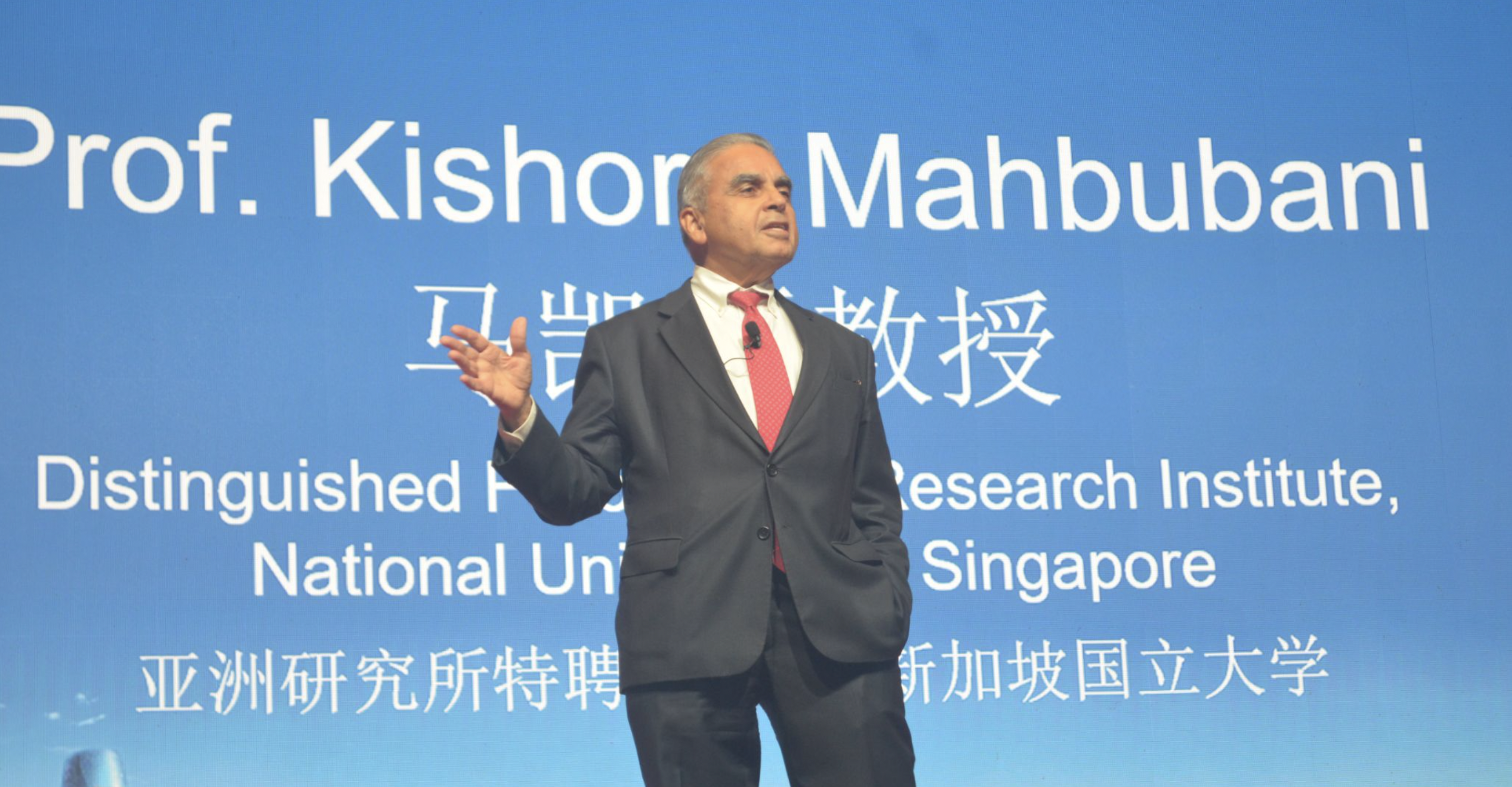Follow us on Telegram for the latest updates: https://t.me/mothershipsg
Asean could be torn apart in the major geopolitical contest between the U.S. and China, said former senior diplomat Kishore Mahbubani, adding that it is Asean's priority to ensure that a war does not break out in the region.
In his keynote speech, the distinguished fellow of Asia Research Institute at National University of Singapore (NUS) spoke at length about the ongoing U.S-China geopolitical rivalry and the implications on Asean, while linking them the economic dimension.
His comments also came at a time when Singapore leaders have reiterated the devastating consequences of a U.S-China conflict in Asia.
US-China geopolitical competition
Offering his perspective on the China-Asean relationship, Mahbubani first noted that the “single biggest challenge” that will affect the dynamics would be geopolitics.
He remarked that “the biggest geopolitical contests of all time” will be happening in the next decade and covered the structural forces that are driving the geopolitical contest between the U.S. and China.
The first is the “iron law of geopolitics” on how the world’s “number one” power would try to stop “the world’s number one emerging power”.
“And so what is happening as the United States is trying, clearly, to stop China's rise that conforms to an iron law of geopolitics. But is it so amazing that in a capital like Washington DC, that is so deeply divided on everything, [...] the only one thing that they agree on is that it's time to stop China.”
In his opinion, the Biden administration is “tougher” on China compared to the Trump administration, raising the example of the chip exports.
Emotions and ideology
Mahbubani also talked about the “emotional force” that is driving the geopolitical rivalry, notably how the West harbours a “fear of the yellow peril”, referring to the metaphor that depicts the Asian world as an existential danger to the West.
Additionally, the ideological dimension also has a role to play, such as how the U.S. has framed the geopolitical contest as one “between democracy and authoritarian systems”.
Implications for Asean
Mahbubani then moved on to expound on the potential disrupting effects of this geopolitical contest on Asean.
“Firstly, the one big danger is that Asean could be torn apart. [...] It is clear, that among the 10 Asean countries, I’m not revealing a big secret, some are closer to China, some are closer to the U.S, that’s a fact.”
Though Asean could be “in some ways stretched”, it possessed the capacity to survive due to it being “loose and flexible”, he opined.
The second challenge to the regional bloc, according to Mahbubani, could be the polarisation in global supply chains, moving from “greater trade integration to de-globalisation”.
The third challenge raised by him is the definite possibility of “a war in our region, directly or indirectly caused by this U.S.-China contest.”
“I wanted to mention this because it's important for us to understand that geopolitics is a very dangerous thing.”
“The Ukrainian war is a direct result of the geopolitical incompetence of the Europeans. And we can prevent war in the region if we show geopolitical competence.”
Mahbubani then reiterated that Asean’s first priority to ensure that no war happens in the region.
"Tremendous" opportunities for Asean
Despite the pessimistic outlook, the former diplomat also said that the geopolitical contest could create “tremendous opportunities” for Asean, a similar sentiment echoed by Singapore's former Foreign Minister George Yeo.
Describing the act of great powers “courting” regional countries, Mahbubani remarked that the U.S. and China “will come bearing gifts and goodies for Asean”.
He raised the “remarkable visionary move” of China signing a Free Trade Agreement with Asean, saying that more than 20 years ago, no other regional bloc or great power had signed one with Asean.
China-Asean trade relationship
As a watcher of the Asean trade relationship, Mahbubani was surprised that the volume of trade between China and Asean has reached US$975 billion (S$1,329 billion), a figure put out by the Executive Vice President of China Investment Corporation (CIC) Qi Bin in his speech earlier.
He lauded the “remarkable growth story” of Asean and noted how the region contributed to the global economic growth more than the European Union despite being smaller.
“There's so much complementarity between China and Asean”, he said.
Mahbubani added,
“[The economic growth is] driven by the geopolitical forces and in part the culture of pragmatism that we see prevalent in China and Asean. And all this [...] is going to create what I call virtuous circles.
And these virtuous circles are a result of a generation of the world's largest middle classes and the creation of new consumer demand in our region.”
Mahbubani concluded with two points on the continued growth of China’s consumer market as well as the impact of the “CIA”.
“I believe that over the next decade, China's global growth will be driven by all the (inaudible) CIA. CIA is not the Central Intelligence Agency. CIA is China, India and Asean.”
“That's going to be the world's largest middle class population.”
With the combination of all these factors, Mahbubani believes that there are many opportunities for Asean if one can “carefully manage this geopolitical contest”.
CGS China-Asean Business Leaders Summit
Mahbubani was speaking at the two-day inaugural China-ASEAN Business Leaders Summit held from Mar. 9 to 10.
The event is hosted by China Galaxy Securities in partnership with Business China, China Enterprises Association (Singapore), and CIMB.
Other guests-of-honour included Malaysia's Minister of International Trade and Industry Tengku Zafrul Aziz and the Secretary-General of Asean H.E. Kao Kim Hourn.
The gathering, themed “From Pandemic to Recovery to Discovery”, brings together delegates from the region’s leading corporations and key policy making entities.
Psssst! Follow us on LinkedIn for more stories like these.
Top image via Yen Zhi Yi
If you like what you read, follow us on Facebook, Instagram, Twitter and Telegram to get the latest updates.
